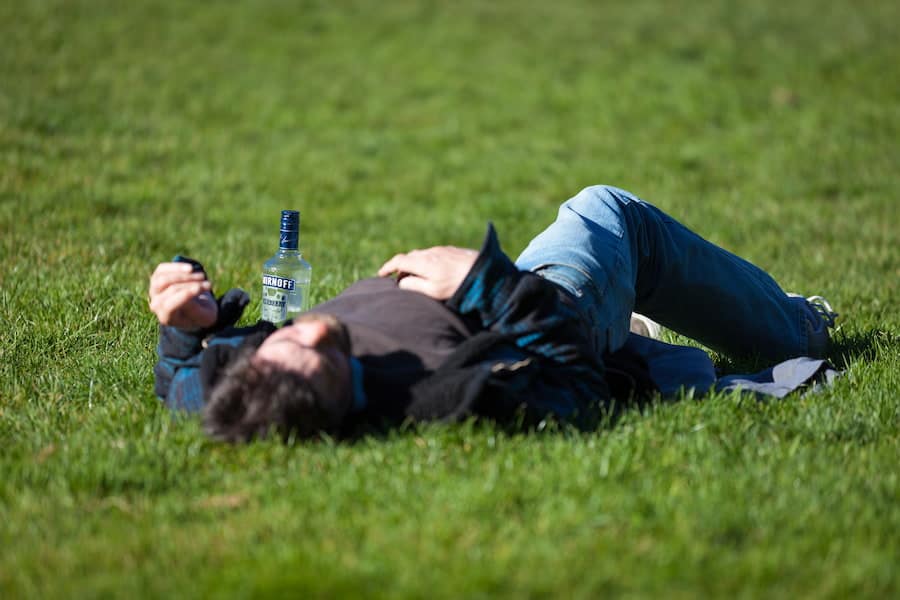If you buy something through a link in our posts, we may get a small share of the sale.
Knowing how your body reacts to alcohol is very important. Before you start drinking, it is crucial to know the amount of alcohol to take to get drunk without overdrinking. This article provides you with all you need to know on how many shots to get drunk.
Contents
How Many Shots To Get Drunk
Men get drunk after taking 7-9 shots while women get drunk after an alcohol consumption of 5-6 shots. However, the exact number of drinks depends on the alcohol content in the beer.

Although the intoxication effect varies with how frequently someone drinks, women tend to get intoxicated rapidly than men. So, how many shots to get drunk? Here is a comprehensive guide on how many shots you need to get drunk.
How Much Time Does It Take To Feel the Effects of Alcohol?
You cannot feel the effects of alcohol instantly. It slowly gets absorbed in the body then creates an exciting feeling after some time. However, this depends on your tolerance level among other factors such as:
- Gender
- Genetic formation and medical conditions
- The type of drink you are taking as some drinks have a higher percentage of alcohol than others. There are cheap beers that actually have a high level of alcohol content.
- Bodyweight
- Whether you are mixing drugs and alcohol
If you are drinking at a moderate pace, it only takes about 30 minutes to feel the effects of alcohol. Below are symptoms that you may feel when your body has reacted to alcohol.
- Euphoric
- More fatigued
- Less coordinated
- Less inhibited
- More social
Consumption of Alcohol- Male vs Female
Alcohol metabolism differs based on gender differences. Mostly, women experience more intoxicant effects and tend to get drunk faster than men. This is because they have less water weight and more fat than men.
According to the National Institute on Alcohol Abuse and Alcoholism, as the initial intoxicant effect shows, women tend to have already absorbed more alcohol in their bloodstream. The faster you consume alcohol, the faster it gets absorbed in the bloodstream and the quicker the creation of an intoxicating effect. Below are reasons why alcohol metabolism varies in women and men.
Weight and Height Differences
People with a lot of weight tend to slow alcohol metabolism. In this case, men are often taller and weigh more than women, making them drink more before they get drunk. Most women weigh less and that is why they are more affected by alcohol.
Hormonal Differences
An increase in estrogen levels makes the brain respond faster to alcohol. Typically, women have high estrogen levels compared to men and that is the reason why they feel the effects of alcohol faster.

Digestive Enzyme Differences
Dehydrogenase is an enzyme in the stomach and liver that helps in the breakdown of alcohol. The level of this enzyme is higher in men than in women. Compared to the percentage in men, women have half the amount of dehydrogenase on a medium scale.
Tolerance Levels
Tolerance levels play an important role in how many shots to get drunk. The more you consume alcohol, the less your body responds to its effects. However, if you are not used to drinking alcohol, you will be more responsive to the intoxicant effects.
Men have higher alcohol tolerance than women which means few shots of alcohol have minimal effects on them. Mostly, they start feeling the effects of alcohol after taking around 7-9 shots. For women, they feel drunk after taking five to six shots.
If they exceed 6 shots, they are at risk of having hangovers, vomiting, and blacking out.
Signs That You Might Be Overdrinking
If you drink too much alcohol, you are at risk of having hangovers. Symptoms of hangovers do not offer any pleasure and vary from one person to another. Here are some common signs that you are overdrinking.
Sleep Disruption
Drinking can disrupt your sleep, make you wake up earlier than normal, and can also increase the feeling of fatigue or tiredness the next day.
Dehydration
Consuming too much alcohol can make you urinate more frequently than normal resulting in fluid loss. The loss of fluids can in turn cause a thirsty feeling, fatigue, and headache.
Acetaldehyde
Acetaldehyde is a chemical formed after alcohol has been metabolized in the body. It has toxic effects and can cause inflammation and tissue damage in your body making you feel sickly. It can also cause other hangover symptoms such as headache, nausea, and sweating.
Low Blood Sugar
Too much intake of alcohol may cause low blood sugar which in turn makes you feel shaky, tired, and weak.
Gastrointestinal Tract Irritation
Alcohol irritates the stomach lining resulting in stomach pain and nausea.

Moderate Drinking Recommendations
Guidelines of moderate drinking state the amount of alcohol to be consumed in terms of gender; women should take one drink and two drinks for men per day. For safe alcohol consumption, here are some moderate drinking recommendations:
Ensure You Don’t Drink on an Empty Stomach
Taking a meal before drinking alcohol is recommended as it helps in slowing down the rate at which alcohol gets absorbed in the body.
Ensure You Are Hydrated
To slow down the effects of alcohol, make sure after every glass of alcohol you take a glass of water or soft drink.
Set Your Limits
Deciding the number of drinks you’re going to take before you start drinking and sticking to that plan is very important. This prevents you from over-drinking and spending too much money than you intended.
Make Sure You Sip Slowly
Spacing out your alcohol consumption to one drink per hour and ensuring that the one hour has passed before taking a new drink is recommended. It makes you enjoy your drink and helps you avoid drinking too much.
When Does Drinking Become Dangerous?
Many people find drinking in moderation not harmful. Over time, they end up drinking too much making their rate of drinking worrisome. Instances when drinking becomes problematic include:
Binge Drinking
Binge drinking refers to drinking alcohol excessively within a short time leading to higher Blood Alcohol Concentration (BAC). This mode of drinking in women is when they consume 4 drinks within 2 hours and 5 drinks within 2 hours for men.
Heavy Use of Alcohol
Heavy drinking refers to taking too much alcohol for one week. In this kind of alcohol consumption, you might be at risk of getting long-term health problems. For men, heavy drinking is having 15 drinks or more per week while in women it is having eight drinks or more per week.

Negative Health Effects of Alcohol
Many potential negative effects are associated with excessive drinking. They include:
- Digestive problems, such as pancreatitis and ulcers.
- Higher chances of getting involved in impulsive sexual behavior
- Domestic violence.
- Accidental injuries.
- A weak immune system makes you prone to illnesses.
- Alcohol poisoning.
- Heart diseases such as stroke and high blood pressure.
Groups of People That Should Avoid Alcohol
At certain times, they are groups of people that may require to limit their alcohol consumption while others should not drink it at all. They include:
- Pregnant or breastfeeding women.
- Persons who carry out activities that require alertness and coordination.
- Patients who are under certain medication.
- People recovering from alcohol use disorder.
- Children under the legal age of drinking.
- Those with underlying health conditions.
- Addicts who are unable to control their rate of alcohol consumption.
Related Questions
Can You Get Drunk by Drinking Non-alcoholic Beverages?
You can only get drunk only by taking drinks with high alcohol content like beer. However, ensure you look at the ingredients of your beverage before consumption because some might seem like softs drinks but have alcohol, a great example of this would be alcoholic root beers.
What Happens if Alcohol Is Mixed With Other Drugs?
Alcohol can be harmful if it interacts with other drugs. The interaction causes you to experience some feelings such as headaches, drowsiness, nausea, and loss of coordination.
Final Thoughts
So, how many shots to get drunk? The number of shots to get drunk depends on gender, body weight, and the type of drink. How frequently you consume alcohol within a certain period also matters a lot on the number of shots to get drunk.

